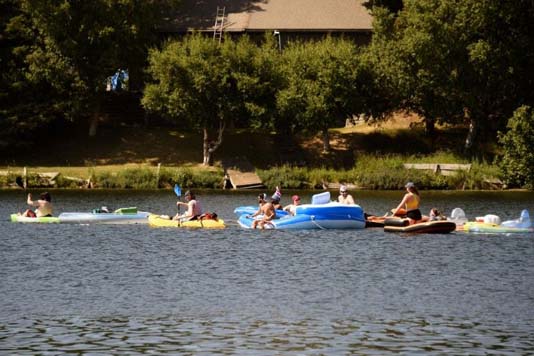LOS ANGELES, July 6, 2019 (BSS/AFP) – Temperatures in Alaska’s largest
city Anchorage have soared to a sweltering all-time record of 90 degrees
Fahrenheit (32 centigrade) as a heat wave grips the US state which straddles
the Arctic Circle.
Fourth of July fireworks were canceled due to risk of wildfires caused by
“extreme dry weather conditions,” as temperatures matching those in Miami
highlighted rapid warming in a region considered particularly vulnerable to
climate change.
“At 5pm this afternoon, Anchorage International Airport officially hit 90
degrees for the first time on record,” tweeted the National Weather Service
(NWS) late Thursday.
The previous record was 85 degrees, set in June 1969.
The average high temperature for July 4 in Anchorage, located in southern
Alaska, is a far cooler 65 degrees.
– Giant high-pressure ridge –
The abnormally warm weather is being caused by a “giant ridge of high
pressure sitting right over us,” NWS meteorologist Bill Ludwig told the
Anchorage Daily News.
Alaska had earlier broken temperature records throughout a hot spring,
particularly in the Arctic zone which is especially sensitive to fluctuations
in climate.
All 30 days in June had above-average temperatures, the NWS said.
According to scientists, Alaska is warming at twice the rate of the global
average.
“From 1901 to 2016, average temperatures in the mainland United States
increased by 1.8 degrees Fahrenheit… whereas in Alaska they increased by
4.7 degrees,” Rick Thoman, a climate specialist at the Alaska Center for
Climate Assessment and Policy, told AFP in April.
– Fast-melting ice –
The dramatic warming Alaska has experienced in recent years — linked
partly to a decline in sea ice and Arctic ocean warming — has wreaked havoc
on local communities, wildlife and the state’s economy.
Permafrost — the frozen ground that covers almost 85 percent of Alaska —
is thawing, affecting everything from building foundations to wildlife
habitats and the picking of berries that grow on the tundra.
Frozen rivers usually serve as transport routes in winter, as two-thirds
of communities in the state are not accessible by road.
But higher temperatures have made the ice dangerously thin and unsafe for
truck or car travel.
Many recreational sled-dog races have had to be canceled this year, and
the famed Iditarod race had to be re-routed as what is normally solid sea ice
was open water on part of the race course.
Crab fishing has also been affected as the sea ice that fishermen use as a
platform is non-existent or too thin in some areas.
Alaska’s seal population is likely to be affected this summer, as some
species give birth on solid ice, Thoman said.
Global warming has led to the lowest ice levels in the Bering Sea — which
connects with the Arctic Ocean — since 1850, when sea ice records were first
kept, he added.
While it is unprecedented for the mercury to hit 90 degrees in coastal
Anchorage, temperatures as high as 100 degrees have been recorded in Alaska’s
interior.
The high-pressure system causing the current spike in temperatures is
expected to shift north to inland areas in the coming days, with further
records likely to be broken, according to AccuWeather.



